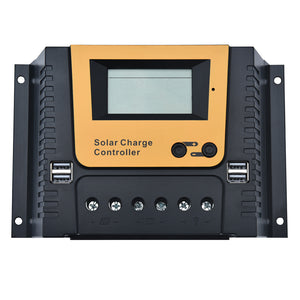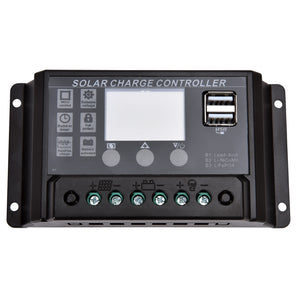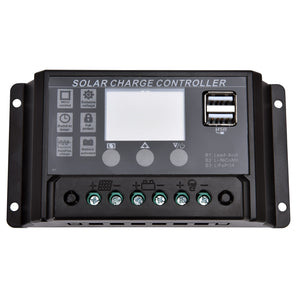You've probably heard about solar charge controllers or solar regulators in solar panel setups. Basically, its primary function is to serve as a charge regulator for the current that goes into the battery bank from a solar array. Why is it important? A solar regulator helps prevent your battery from overcharging during the day and makes sure they do not send their stored power back to the solar panels in the evening. Solar charge controllers are mostly essential for off-grid use such as camping, staying in remote cabins, or going on road trips. If you have a storage battery installed with a grid-tie home system, then a regulator won't be needed anymore.
There are also two main types of solar regulators: The Maximum Power Point Tracking (MPPT) and the Pulse Width Modulation (PWM) controller. Both of these work by adjusting the charging rates based on the battery's charge level for maximum charging efficiency. MPPT and PWM are different in the sense that MPPT operates at a voltage higher than the battery to provide a boost of power at low charge levels and in cold weather while PWM matches the battery's voltage for superior performance at full charge level and in warm temperatures.
What Is a PWM Regulator?
Let's focus more on the PWM regulator. This type of controller directly connects your solar array to the battery bank so during the charging process, the voltage battery increases along with the solar panel voltage. This means that you can only use panels with the same voltage level as the battery and charge controller. For example, if you're using a PWM charge controller, a 12V battery can only be charged with a 12V solar panel. If you charge it with a higher voltage panel like a 48V one, the PWM will not acquire the extra energy produced and will only gather 12V. You can think of it as an electrical switch that switches on and off accordingly to hold the battery voltage at the absorption or float voltage level.
Is MPPT Better Than PWM?
While many would say that an MPPT is better and more efficient, this is not the case at all times. The technologies used for both regulators are different and have their own advantages depending on the site conditions, components, size of solar panels, and costs. In terms of temperature, an MPPT is more suited for colder conditions as it produces up to 20-25% more charging power than a PWM controller. Meanwhile, a PWM regulator has the advantage during warmer weather since the maximum voltage power point of solar panels tends to decrease, operating at a voltage closer to a 12V battery. Therefore, there is no excess power to be transferred to the battery, making an MPPT controller unnecessary.
The size of your solar power setup also plays a role in whether a PWM or MPPT would be a better fit for you. If you're running a lower power system, a PWM controller is generally more suitable because it's less expensive and operates at consistent energy regardless of the size of the array, unlike MPPTs which usually work best at systems with 170W and above. When it comes to load, if you have a larger solar array compared to the power drawn from the batteries, your batteries will remain close to a fully charged state. In this case, a PWM controller is enough to efficiently maintain the entire system without the need for an MPPT controller. MPPTs are significantly more expensive than PWMs but they are also more efficient in certain conditions. This is why instead of thinking MPPT vs PWM, it is important to consider the above-mentioned factors first to make sure you get the most out of the solar charger you will be buying.
Can PWM Charge Lithium?
It's best to use PWM with a lithium iron phosphate battery or LiFEPO4 if you're thinking of pairing it with a lithium battery. This is because of LiFEPO4's built-in battery management system (BMS) which automatically prevents overcharging or undercharging. The chances of your battery catching fire or getting damaged are less compared to when you use it with a lithium-ion battery. LiFEPO4 are best known for their safety features, making them highly recommended for camping battery setups, caravan battery setups, and even home solar power installations.
More from Outbax
Once you figure out the amount of power you need for your outdoor trip, you can start buying your camping gear like solar panels, lithium batteries, solar charge controllers, inverter generators-whatever you need for the type of portable power you choose to bring. Outbax has a range of these plus a team of experts to assist you if you have any concerns. We specialize in quality outdoor equipment and leisure items at an affordable price so make sure to check out our site the next time you're planning an adventure!




